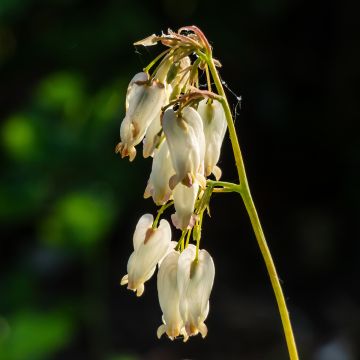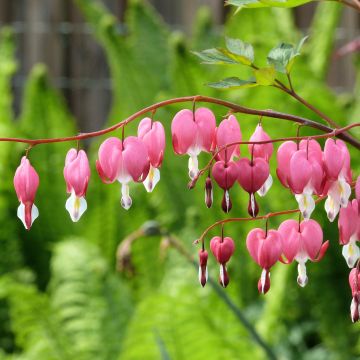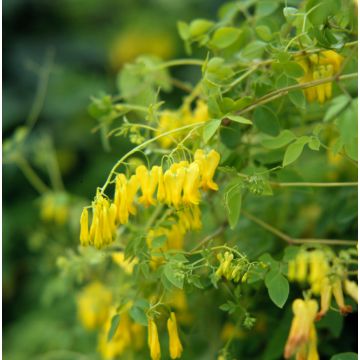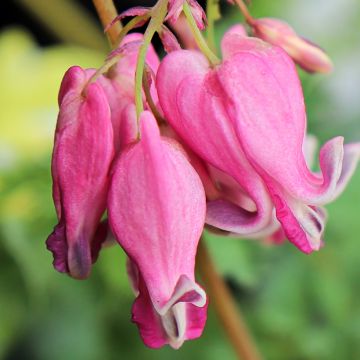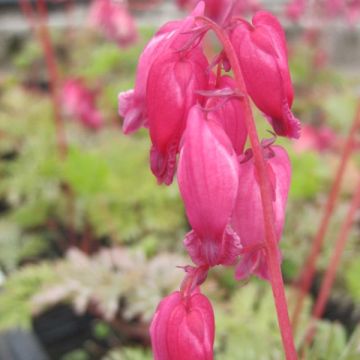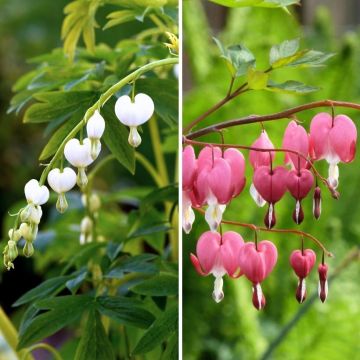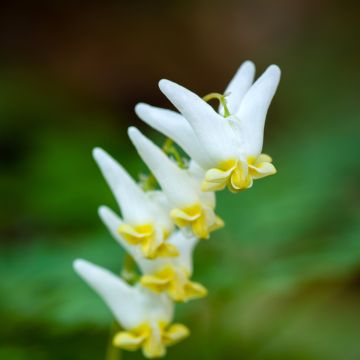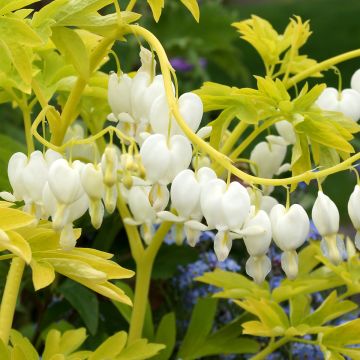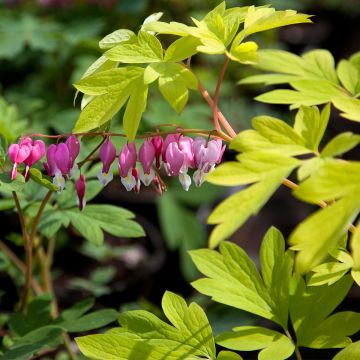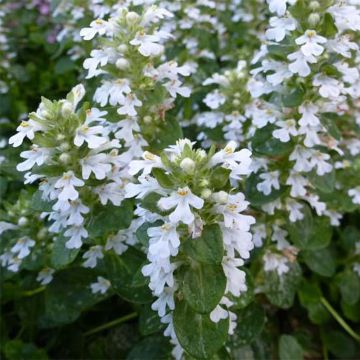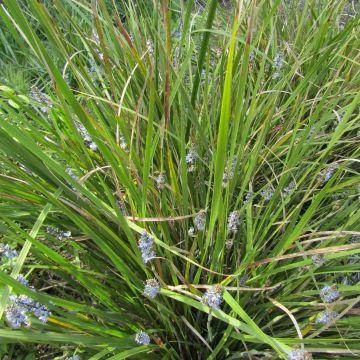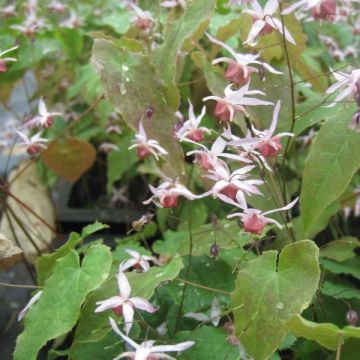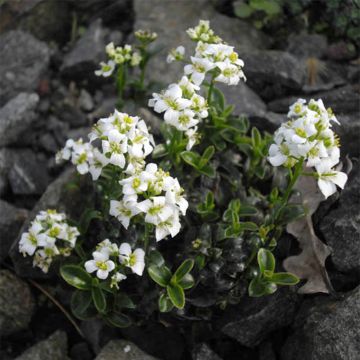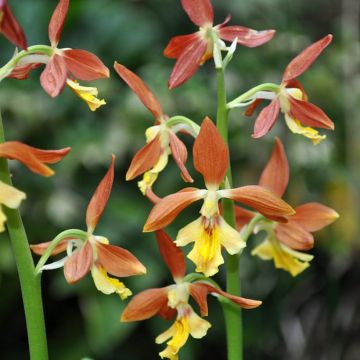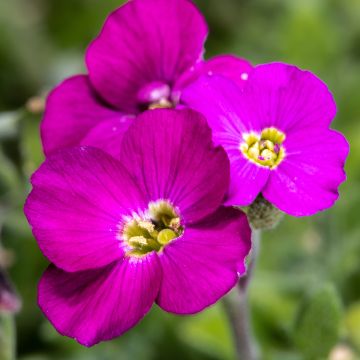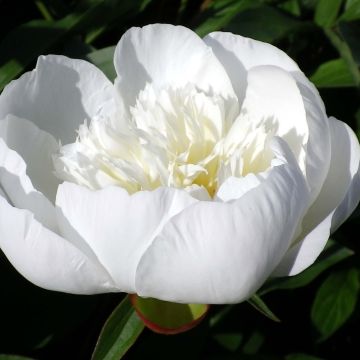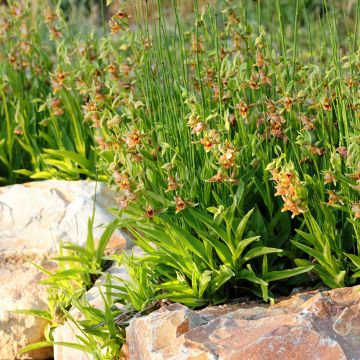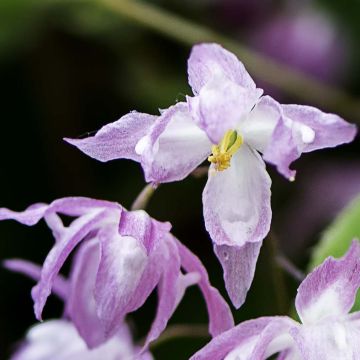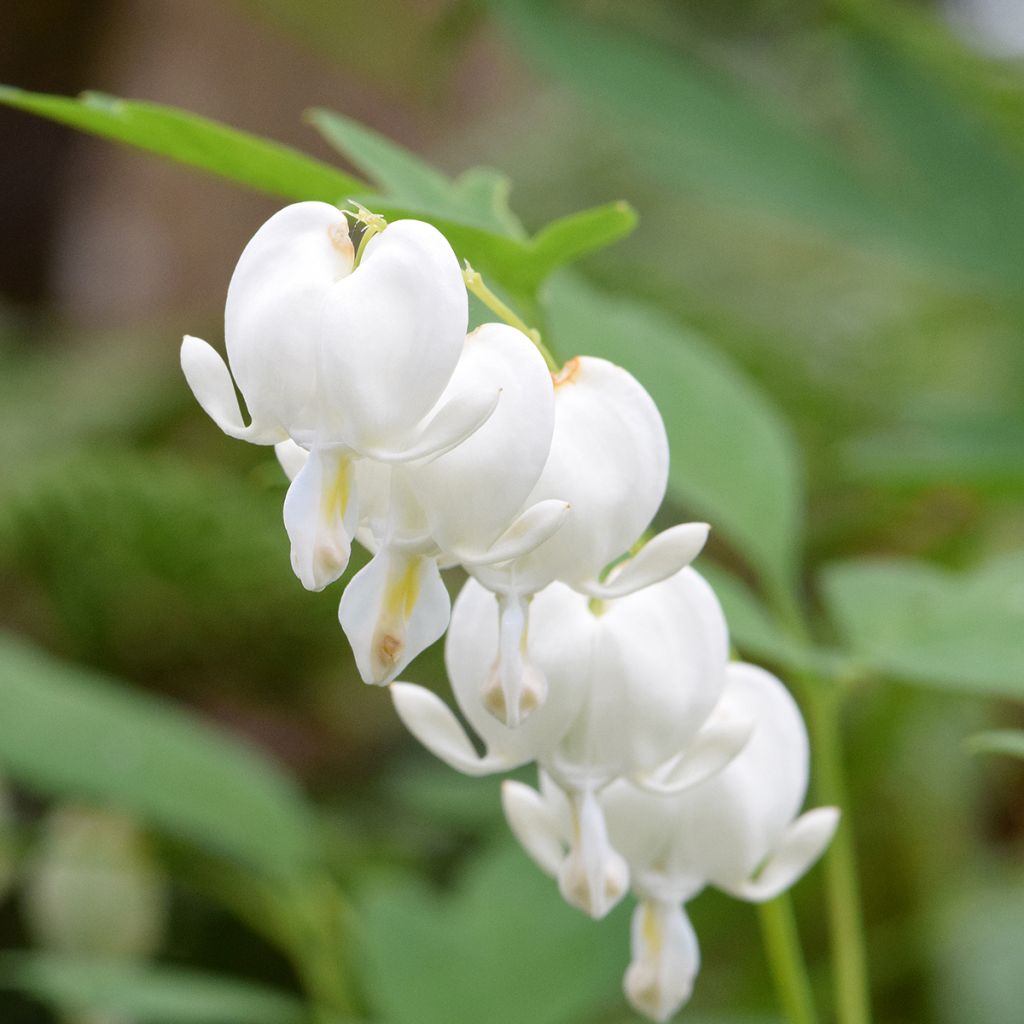

Dicentra spectabilis Alba
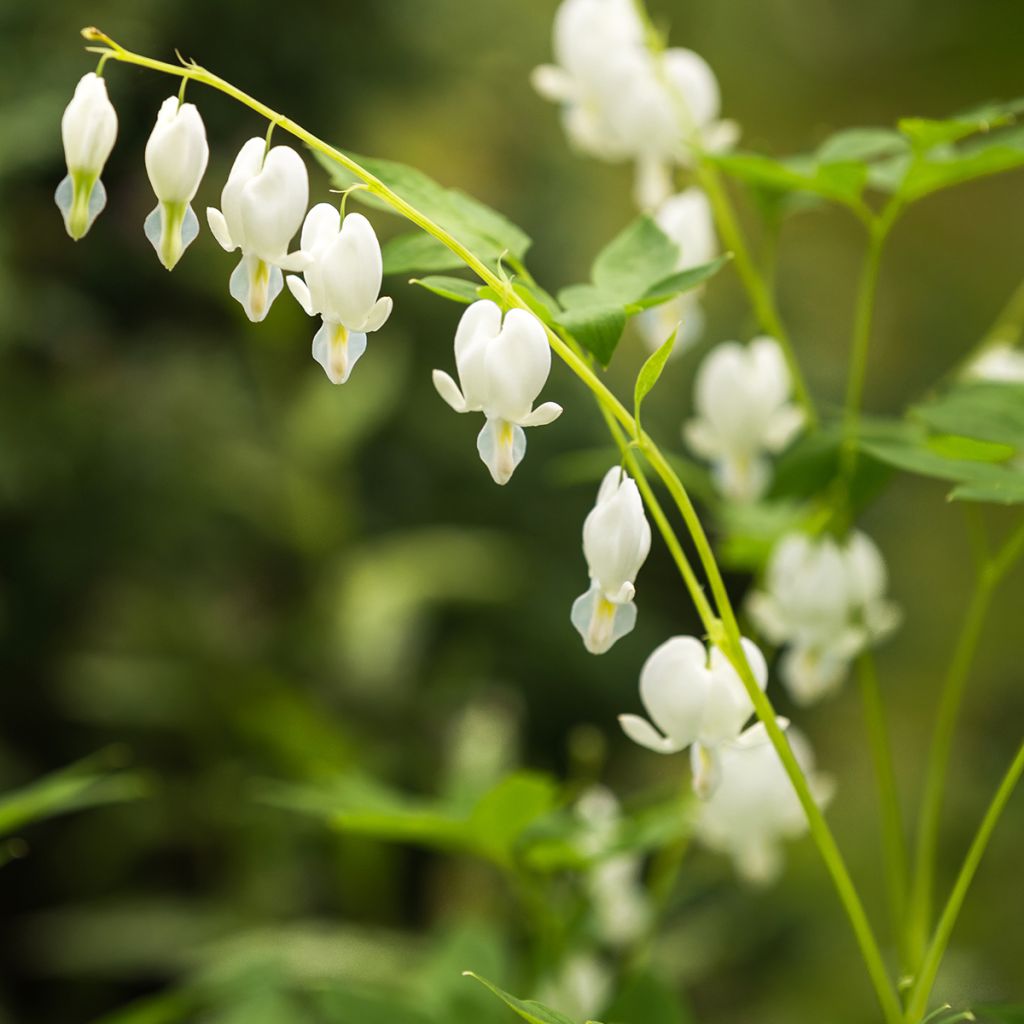

Dicentra spectabilis Alba
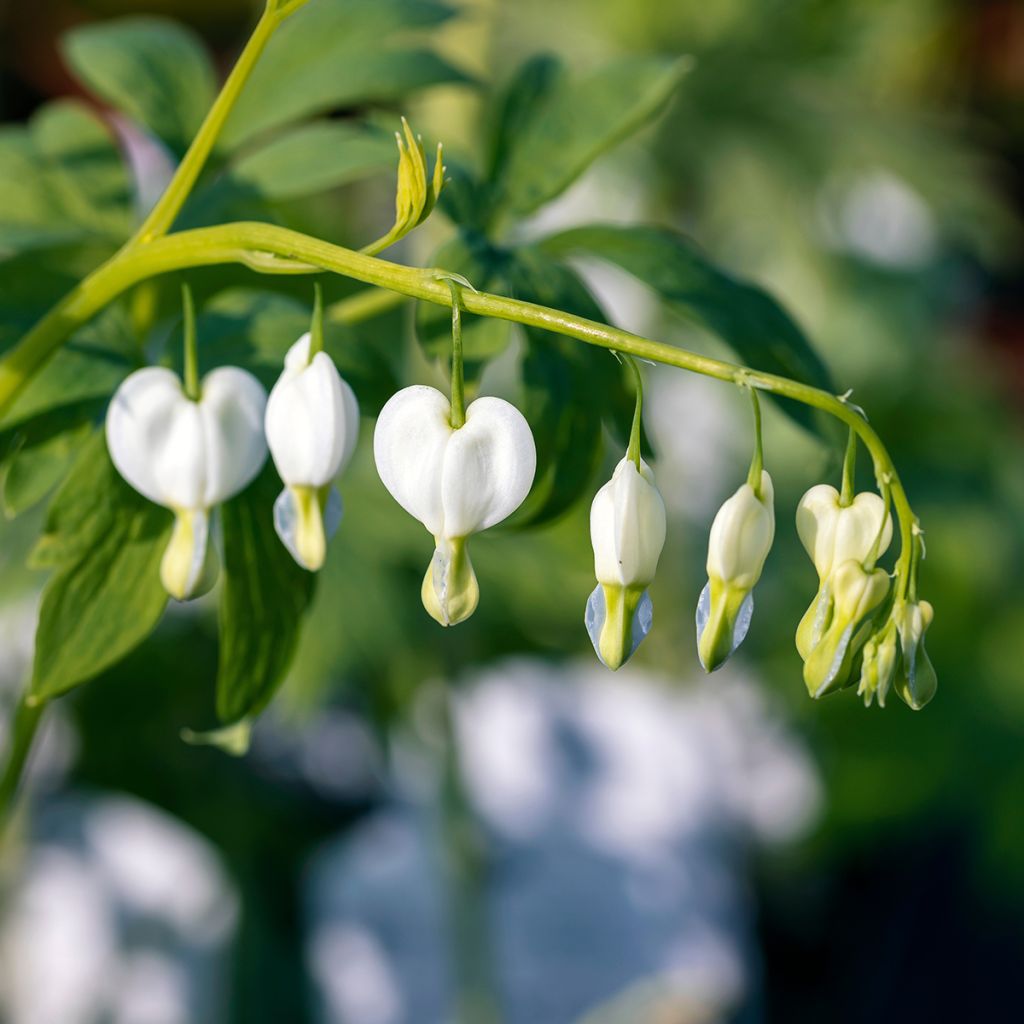

Dicentra spectabilis Alba
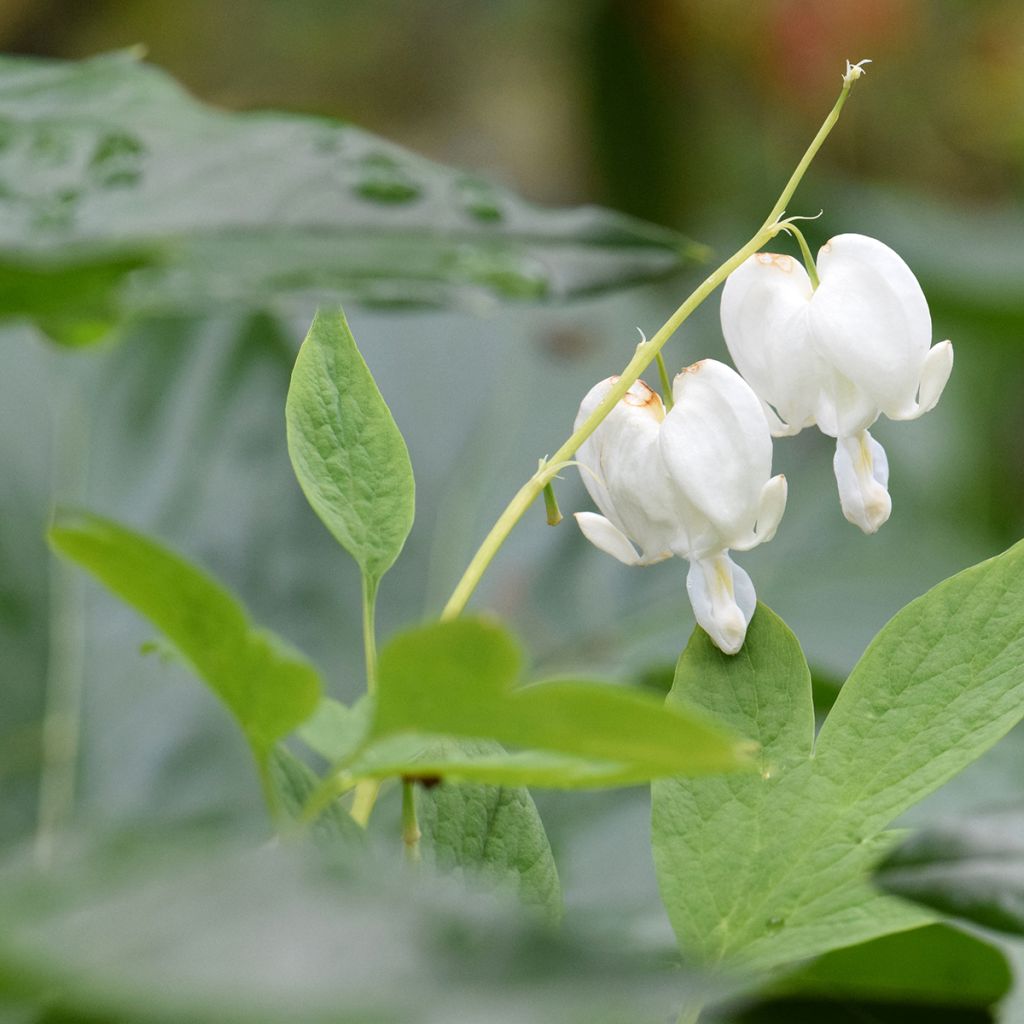

Dicentra spectabilis Alba
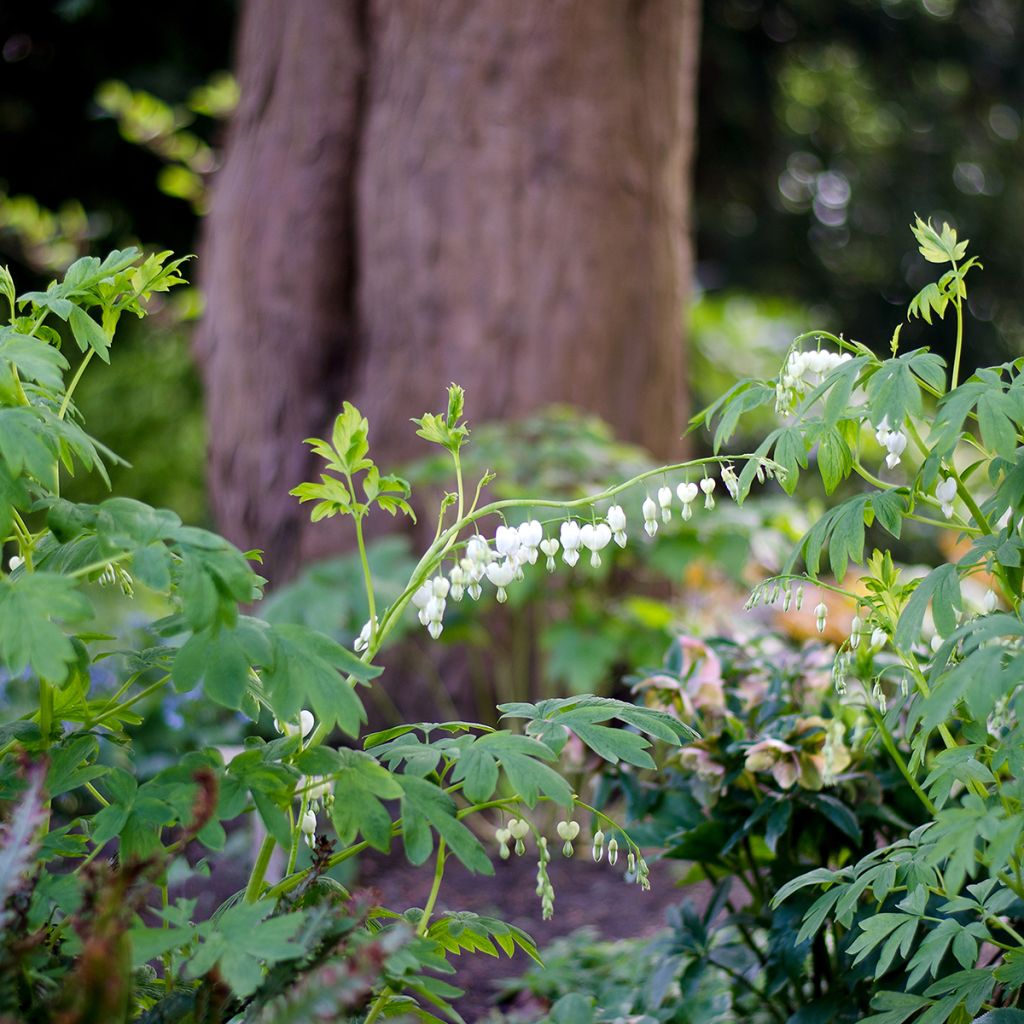

Dicentra spectabilis Alba
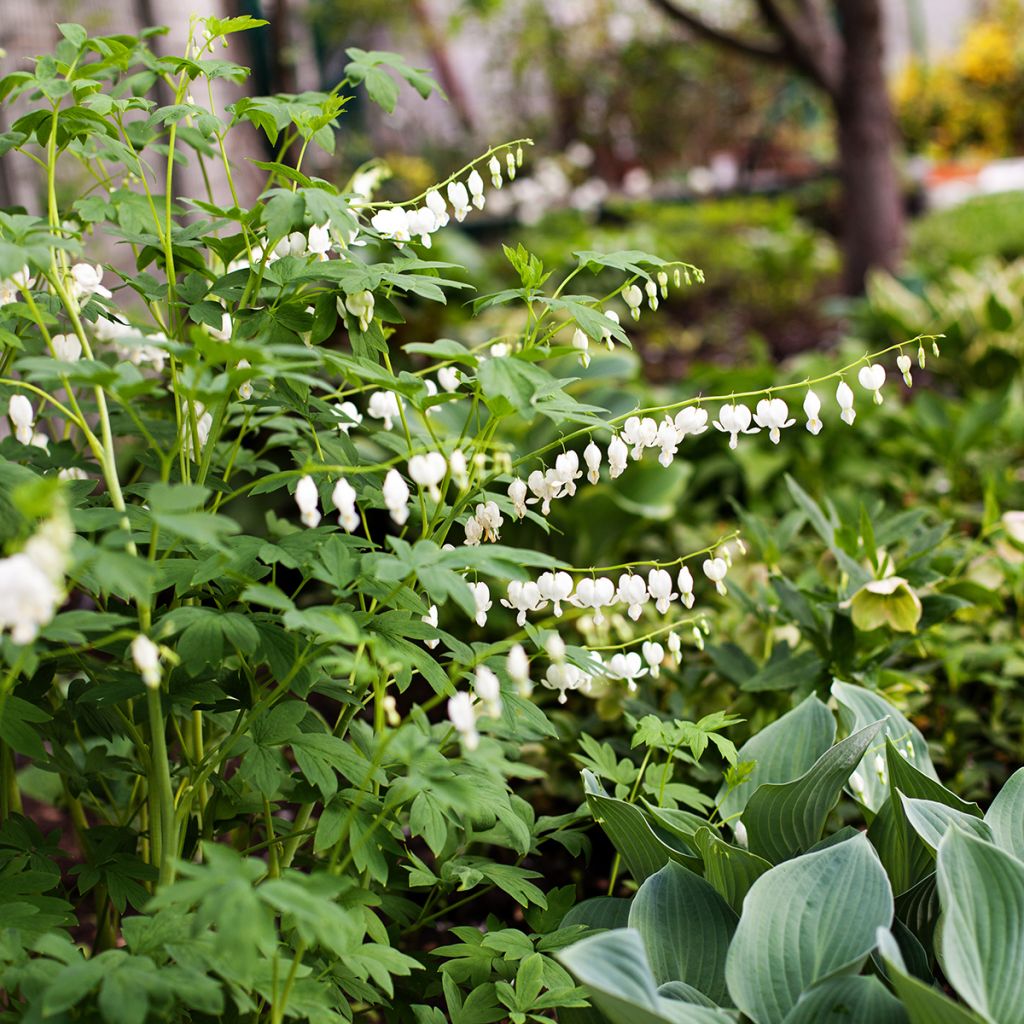

Dicentra spectabilis Alba
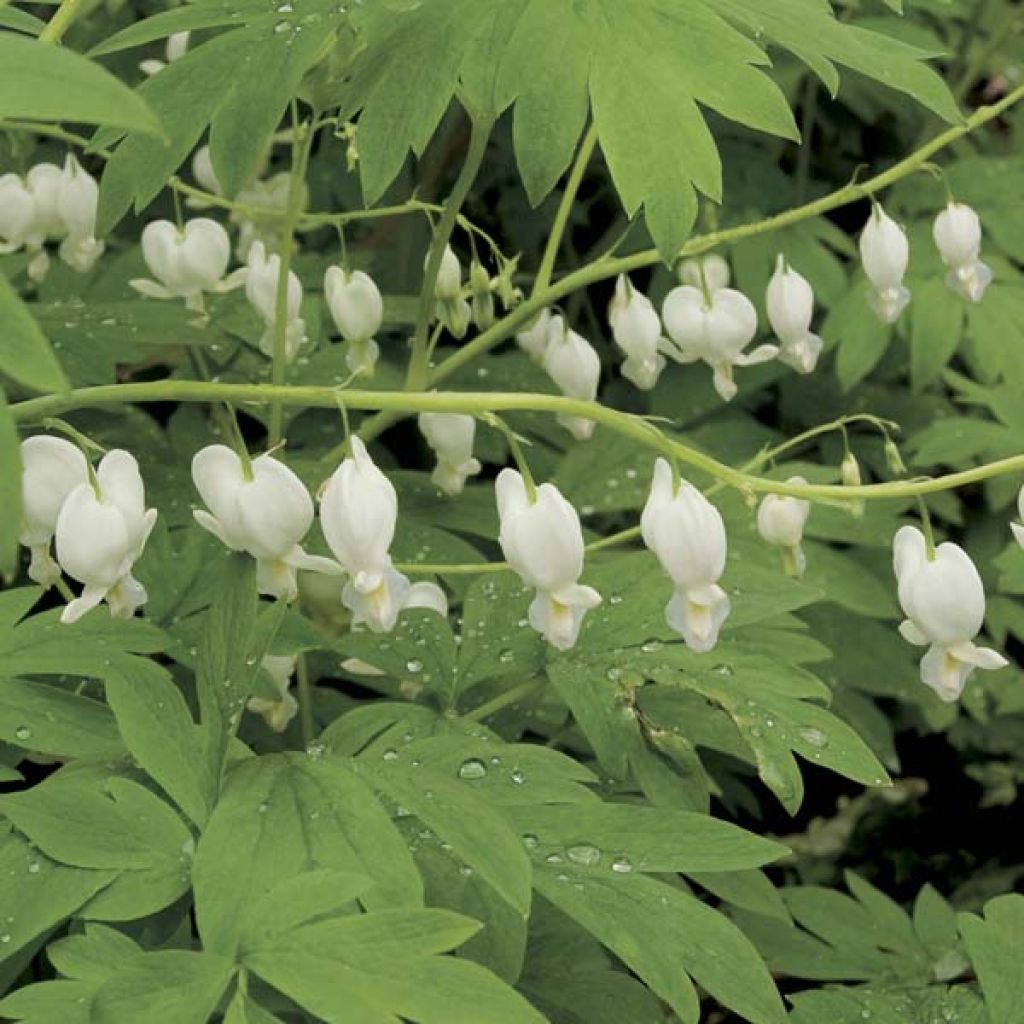

Dicentra spectabilis Alba
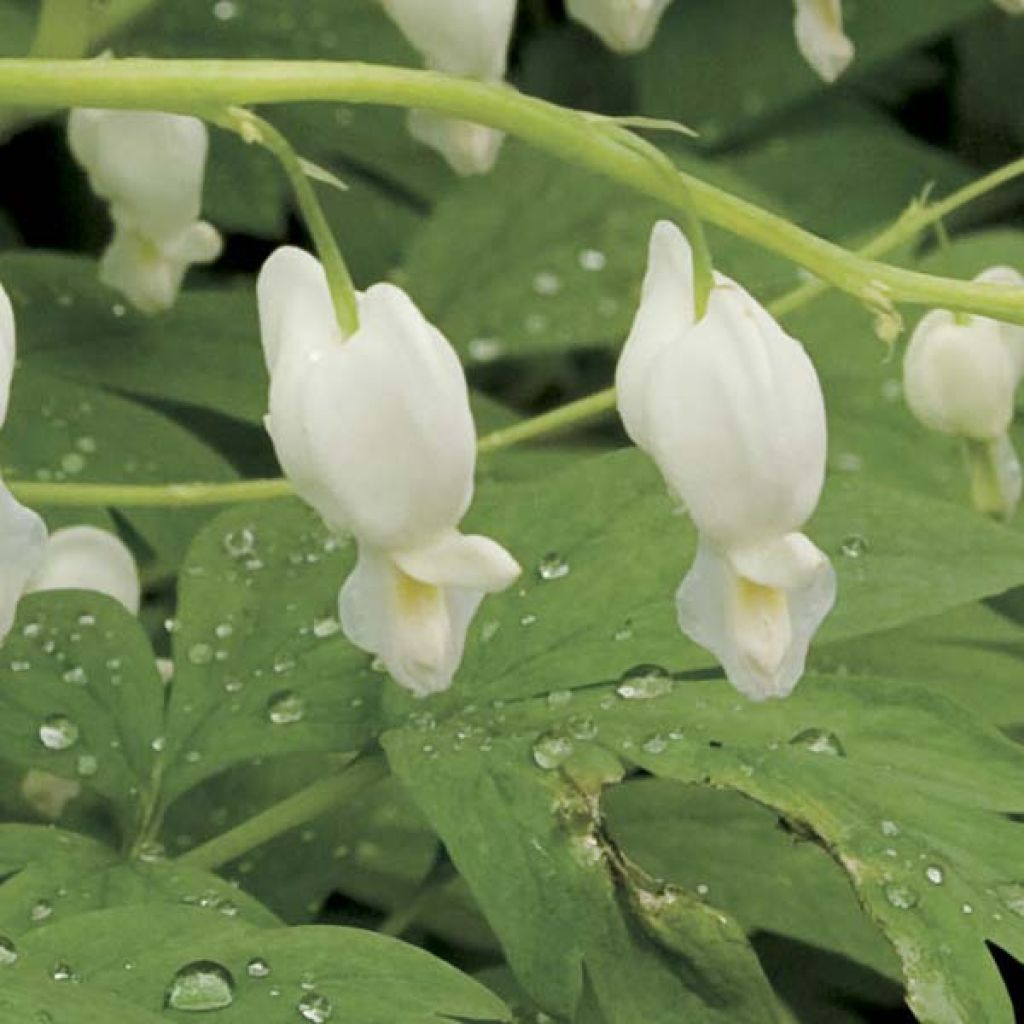

Dicentra spectabilis Alba
Dicentra spectabilis Alba
Dicentra spectabilis Alba
Bleeding Heart, Lyre Flower, Lady in a Bath
This item cannot be shipped to the selected country
Delivery charge from €5.90
Delivery charge from €5.90
Delivery charge from €5.90
More information
Schedule delivery date,
and select date in basket
This plant carries a 12 months recovery warranty
More information
We guarantee the quality of our plants for a full growing cycle, and will replace at our expense any plant that fails to recover under normal climatic and planting conditions.
From €5.90 for pickup delivery and €6.90 for home delivery
Express home delivery from €8.90.
From €5.90 for pickup delivery and €6.90 for home delivery
Express home delivery from €8.90.
From €5.90 for pickup delivery and €6.90 for home delivery
Express home delivery from €8.90.

Does this plant fit my garden?
Set up your Plantfit profile →
Description
The Dicentra spectabilis 'Alba' is a charming form with entirely white flowers of the timeless bleeding heart. This perennial has foliage that is almost as decorative as its flowering, developing arched stems adorned in spring with graceful heart-shaped white flowers, which appear to be suspended. Introduced long ago in gardens, Dicentra spectabilis is almost fail-safe in moderately dry temperate climates. Hardy and robust as well as charming, it will thrive for many years in partial shade, in any good garden soil that remains somewhat cool.
The Dicentra spectabilis, now renamed Lamprocapnos spectabilis, belongs to the family Papaveraceae (formerly Fumariaceae). It originates from Korea, northwest China, and Japan, where it grows naturally in leafy forest humus. This species has become naturalized in certain regions of France, where it can be found up to an altitude of 1800 m (5905ft). It is a herbaceous perennial plant with rhizomes, and its above-ground vegetation disappears completely in winter. It has excellent cold resistance, but the young spring shoots may suffer from late frosts.
'Alba' differs from this species only in the white color of its flowering. At maturity, the plant will reach a height of about 60 cm (24in) and a minimum width of 50 cm (20in). In spring, arched stems emerge from the ground, bearing compound and pinnate leaves, finely divided into lobes, with a delicate appearance. Flowering occurs in late spring, starting in May depending on the climate, and may continue until July if the soil remains cool. Otherwise, the bleeding heart enters dormancy in summer. At the tips of the stems, 3 to 15 pendulous flowers appear, measuring 3 to 5 cm (1 to 2in) in height and 2 to 3 cm (1in) in width. Each flower consists of outer petals forming a heart and inner petals in the shape of an arrow. In 'Alba', the flowers are pure white. After pollination by insects, they give way to pods that contain round black seeds surrounded by a white and mucilaginous substance.
The 'Alba' bleeding heart thrives in woodland settings and easily grows under deciduous trees, provided that the soil remains cool in spring. In the background of a white flower bed, accompanied by Heuchera 'Mint Julep', Hesperis matronalis 'Alba', and Lamium maculatum 'White Nancy', the pure white suspended hearts of the Dicentra spectabilis Alba will work wonders. Most bleeding hearts go dormant at the end of spring, but this does not have any detrimental effects on plant growth.
Report an error about the product description
Dicentra spectabilis Alba in pictures
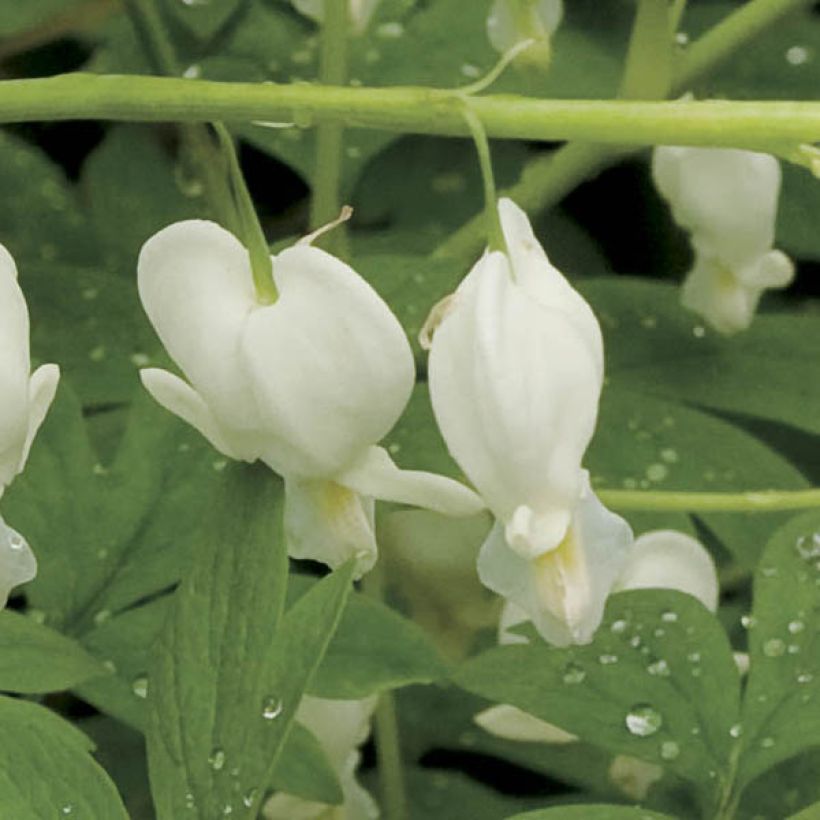

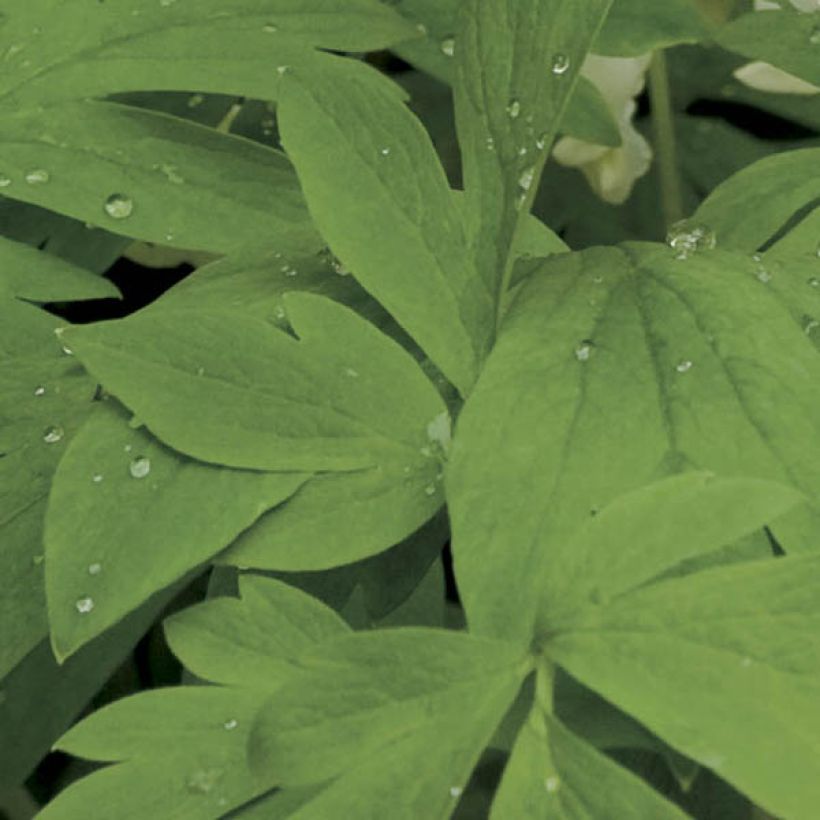



Flowering
Foliage
Plant habit
Botanical data
Dicentra
spectabilis
Alba
Papaveraceae (Fumariaceae)
Bleeding Heart, Lyre Flower, Lady in a Bath
China
Other Dicentra - Bleeding Hearts
Planting and care
The White Bleeding Heart (Dicentra spectabilis, now called Lamprocapnos spectabilis) is a perennial plant of cool Asian woodlands, preferring partial shade or light sun.
To thrive, its fleshy stump requires good garden soil: well-drained, humus-bearing, rich, and light. It can rot in clayey and heavy soil. It also dislikes hot situations and dry soils.
It is a plant that undergoes summer dormancy: after flowering in spring, the Bleeding Heart goes to sleep with the first heat, and all its above ground parts dry up and disappear until the following spring. This phenomenon is completely normal and allows this species to survive the hottest periods without any issues.
If your soil is too poor or sandy, you can add a good layer of dead leaves in autumn, which will enrich and loosen your flower beds after a few years. Avoid synthetic fertilizers that only enrich the soil in the short term.
Weekly watering is recommended throughout the first year, during the hot season, to promote growth. Stop watering when the leaves turn yellow and disappear.
The tender leaves of the Bleeding Heart are also quite sensitive to slugs and snails at the beginning of their growth. Place ashes, eggshells, or, if unavailable, granules suitable for organic agriculture around the stump, to avoid any harm to animals that consume gastropods.
Planting period
Intended location
Care
-
, onOrder confirmed
Reply from on Promesse de fleurs
Spring flowering perennials
Haven't found what you were looking for?
Hardiness is the lowest winter temperature a plant can endure without suffering serious damage or even dying. However, hardiness is affected by location (a sheltered area, such as a patio), protection (winter cover) and soil type (hardiness is improved by well-drained soil).

Photo Sharing Terms & Conditions
In order to encourage gardeners to interact and share their experiences, Promesse de fleurs offers various media enabling content to be uploaded onto its Site - in particular via the ‘Photo sharing’ module.
The User agrees to refrain from:
- Posting any content that is illegal, prejudicial, insulting, racist, inciteful to hatred, revisionist, contrary to public decency, that infringes on privacy or on the privacy rights of third parties, in particular the publicity rights of persons and goods, intellectual property rights, or the right to privacy.
- Submitting content on behalf of a third party;
- Impersonate the identity of a third party and/or publish any personal information about a third party;
In general, the User undertakes to refrain from any unethical behaviour.
All Content (in particular text, comments, files, images, photos, videos, creative works, etc.), which may be subject to property or intellectual property rights, image or other private rights, shall remain the property of the User, subject to the limited rights granted by the terms of the licence granted by Promesse de fleurs as stated below. Users are at liberty to publish or not to publish such Content on the Site, notably via the ‘Photo Sharing’ facility, and accept that this Content shall be made public and freely accessible, notably on the Internet.
Users further acknowledge, undertake to have ,and guarantee that they hold all necessary rights and permissions to publish such material on the Site, in particular with regard to the legislation in force pertaining to any privacy, property, intellectual property, image, or contractual rights, or rights of any other nature. By publishing such Content on the Site, Users acknowledge accepting full liability as publishers of the Content within the meaning of the law, and grant Promesse de fleurs, free of charge, an inclusive, worldwide licence for the said Content for the entire duration of its publication, including all reproduction, representation, up/downloading, displaying, performing, transmission, and storage rights.
Users also grant permission for their name to be linked to the Content and accept that this link may not always be made available.
By engaging in posting material, Users consent to their Content becoming automatically accessible on the Internet, in particular on other sites and/or blogs and/or web pages of the Promesse de fleurs site, including in particular social pages and the Promesse de fleurs catalogue.
Users may secure the removal of entrusted content free of charge by issuing a simple request via our contact form.
The flowering period indicated on our website applies to countries and regions located in USDA zone 8 (France, the United Kingdom, Ireland, the Netherlands, etc.)
It will vary according to where you live:
- In zones 9 to 10 (Italy, Spain, Greece, etc.), flowering will occur about 2 to 4 weeks earlier.
- In zones 6 to 7 (Germany, Poland, Slovenia, and lower mountainous regions), flowering will be delayed by 2 to 3 weeks.
- In zone 5 (Central Europe, Scandinavia), blooming will be delayed by 3 to 5 weeks.
In temperate climates, pruning of spring-flowering shrubs (forsythia, spireas, etc.) should be done just after flowering.
Pruning of summer-flowering shrubs (Indian Lilac, Perovskia, etc.) can be done in winter or spring.
In cold regions as well as with frost-sensitive plants, avoid pruning too early when severe frosts may still occur.
The planting period indicated on our website applies to countries and regions located in USDA zone 8 (France, United Kingdom, Ireland, Netherlands).
It will vary according to where you live:
- In Mediterranean zones (Marseille, Madrid, Milan, etc.), autumn and winter are the best planting periods.
- In continental zones (Strasbourg, Munich, Vienna, etc.), delay planting by 2 to 3 weeks in spring and bring it forward by 2 to 4 weeks in autumn.
- In mountainous regions (the Alps, Pyrenees, Carpathians, etc.), it is best to plant in late spring (May-June) or late summer (August-September).
The harvesting period indicated on our website applies to countries and regions in USDA zone 8 (France, England, Ireland, the Netherlands).
In colder areas (Scandinavia, Poland, Austria...) fruit and vegetable harvests are likely to be delayed by 3-4 weeks.
In warmer areas (Italy, Spain, Greece, etc.), harvesting will probably take place earlier, depending on weather conditions.
The sowing periods indicated on our website apply to countries and regions within USDA Zone 8 (France, UK, Ireland, Netherlands).
In colder areas (Scandinavia, Poland, Austria...), delay any outdoor sowing by 3-4 weeks, or sow under glass.
In warmer climes (Italy, Spain, Greece, etc.), bring outdoor sowing forward by a few weeks.

































